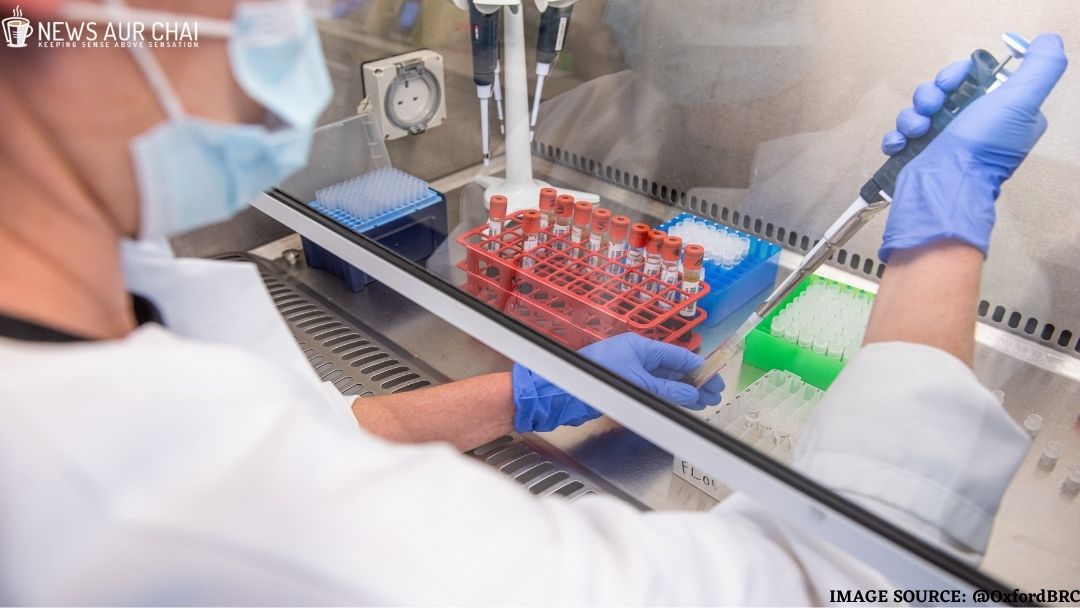
A promising result from the trial of coronavirus vaccine by the Oxford University has raised hope in the fight against the deadly virus. As of today, the infection around the world have crossed 15 million and killed 6.1 lakh people.
According to results published in The Lancet scientific journal on Monday, AZD1222 vaccine appears safe. It also induces a “robust immune response” within the body of the participants, without any severe side effect. The developers, AstraZeneca and scientists at Oxford University in the United Kingdom are closely watching the early stage of the clinical trial.
NEW—UK’s #COVID19 vaccine is safe and induces an immune reaction, according to preliminary results https://t.co/rDPlB9fDKr pic.twitter.com/z2t9Aubjim
— The Lancet (@TheLancet) July 20, 2020
Oxford University vaccine – AZD1222
The experimental vaccine uses a weakened version of a common cold virus found in chimpanzees, with spike glycoprotein, a genetic material from the new coronavirus, added to it.
Oxford had in April announced an agreement with the UK-based global biopharmaceutical company AstraZeneca for further development, large-scale manufacture and potential distribution of this Covid-19 vaccine candidate.
The Phase 1 data for our coronavirus vaccine shows that the vaccine raised no safety concerns, did not lead to any unexpected symptoms in those who received it, and was very similar to other vaccines of this type.
Find out more https://t.co/N7Y2naCB5k#oxfordVaccine pic.twitter.com/cL5rDtXPiY
— Oxford Vaccine Group (@OxfordVacGroup) July 21, 2020
The preliminary test conducted in the Phase-I and -II trials, involving 1,107 healthy adults, aged between 18 and 55 in five UK hospitals turned out successful. The result showed they induced robust antibody and the T-cells immune response, up to day 56 of the ongoing trial.
Preliminary results from a phase 1/2 trial involving 1077 healthy adults found that vaccine induced strong antibody & T cell immune responses up to day 56 of the ongoing trial. These responses may be even greater after a 2nd dose, according to a sub-group study of 10 participants
— The Lancet (@TheLancet) July 20, 2020
The participants were each given one dose and followed for about a month. Ten of them were given a second dose after 28 days.
These levels were on par with the antibodies produced by people who had survived a COVID-19 infection – a key benchmark of potential success.
Oxford lead researcher Sarah Gilbert said the trial could not determine whether one or two doses would be needed to provide immunity.
While the early phase results are positive and welcoming the scientific community also urged caution, stating that it would take around mid of next year to find out if the vaccine works appropriately.
Nevertheless, much remains to be done, as there yet again two or three more stages (human trails) before it can be approved for mass production and global distribution. Also, Oxford researchers said that the vaccine is still to be performed in older adults, who are more prone to the risk of severe disease than the people vaccinated in this study.
The Phase III trials, are currently underway in Britain, South Africa and Brazil, and are due to start in the US. In this phase, the optimal dosage and how much protection vaccinated people have when exposed to the coronavirus is checked.
According to Italy’s health ministry, AZD1222 shot would cost about 2.5 euros (2.8 dollars) per dose in Europe. AstraZeneca does not expect to make a profit from it during the pandemic. The costs in other regions have not been disclosed.
Nonetheless, the Indian Government is expediting the process to give clearance to Serum Institute, Pune, which wants to take up the phase 3 trial of the Oxford vaccine before it starts mass-producing the vaccine.
Adar Poonawalla, CEO of Serum Institute of India, said that the company will apply for permission for phase 3 trials for the Oxford vaccine in India next week and will begin the study soon.
Congratulations to the teams at @UniofOxford and @AstraZeneca for getting this product data, out. It all seems to be doing well. Hope to get positive results in the phase three trials in a few months. We also hope to start phase three trials in India soon. #COVID19vaccine https://t.co/Zroalob7mO
— Adar Poonawalla (@adarpoonawalla) July 21, 2020
Other Vaccine:
The Oxford vaccine is one among the 150 in development globally, but is considered the most advanced.
US drugmaker Pfizer, German biotech firm BioNTech and China’s CanSino Biologics also reported positive responses; wherein China-made vaccine is expected to be out in the market as early as the end of the year.
Meanwhile, Russia’s health minister Mikhail Murashko revealed that coronavirus vaccine would be available for public consumption by the end of next month after it completes the final clinical trial.
The World Health Organization (WHO) has said any viable vaccine must be made available to everyone.





